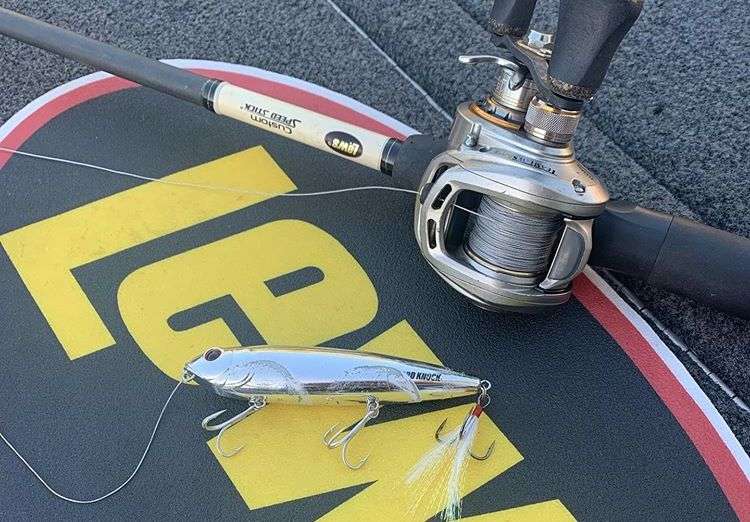
I am of the same cut as thousands of bass anglers who came before me. I feel that I may have a small advantage because I had the experience early in my career with competitive tournament circuits from high school through my college days at Bethel University.
All tournament anglers share a common dream of making it into the Bassmaster Elite Series to be recognized as one of the top bass anglers in the world. Many of the Bassmaster Elite anglers earned their ranks the old fashion way with thousands of hours on the water, reading magazines with bass fishing content, watching TV fishing shows and just going out to fish … learning from every input. New lures, new techniques, new fishing venues, new electronics and technologies are all taken in stride and used to increase our skill sets and knowledge.
On any given day, a professional anger from the Bassmaster Open series can compete well enough to beat the best on tour in a given tournament setting. This is because most of us who reach the level of the Bassmaster Opens have the same talent, knowledge and skills. The problem is being consistent enough to pull off a top three out of 225 anglers in the Angler of the Year (AOY) point standings at the end of the tournament season.
Being mentally tough is a major difference between having a good day and a great tournament instead of an average day and an average tournament. Without the ability to handle pressure, to let go of mistakes and to focus on what is important, you would not see much success from any angler.
In just about every tournament I have entered, you can pick out anglers who have already put themselves behind the curve. You can hear them stressing about the weather, the water conditions, about having a poor practice, or having a lower than expected first day weigh-in. If these anglers cannot get their heads on straight, they are out of the game.
One of the hardest things to learn is keeping your mind clear and not letting negative thoughts clutter your brain and ruin your attitude. Thinking too about what happened earlier only complicates matters.
I do best when I trust my instincts, fish on automatic, and most of all, do not second guess myself. It is important to put together the best pattern, baits, techniques and rod, reel and line combinations before beginning the first tournament day. Adjusting as conditions change is not second guessing.
I may have put together an outstanding practice and established effective patterns only to find on the first tournament day that conditions have changed, and the bass have left that area or stopped feeding. These situations are something that no angler can control.
I could get uptight, nervous and stress myself out, but I have learned to keep my focus and not pay too much attention to things I cannot control. I have enough experience and time on the water that my subconscious can prompt suggestions for adjusting to meet the changed conditions.
My game plan accounts for things I can control. I focus on the next location and remember to focus on one cast at a time. That next cast is the most important; that is the one could put a game changer in the livewell. What happened before is gone, only now can make a difference.
I forgive and forget my mistakes. The only good result is learning from them and pushing them out of my mind. My attention is focused on the water before me and on going through my routines.
The process is not easy, even if it looks easy and sounds easy when watching a tournament on TV. It’s especially tough if you’ve never been on tour and faced the many variables that occur constantly.
We had several weeks off since our last Bassmaster Opens tournament giving us time to regroup, recharge and reconnect with family and friends. My time is being spent doing as much research as possible on the upcoming tournament, which is the Northern Open at Oneida Lake. Putting together a strategy for both smallmouth and largemouth will give me a good starting point once I make my final decisions based on practice results.
The smallmouth bass are getting bigger and meaner each year in Oneida Lake due to the somewhat new forage of gobies that have made their way into the lake. This is the same invasive fish species that has turned around smallmouth bass fishing in all the Great Lakes.
I will focus mainly on finding a couple of schools of “perch fry eaters” on grass lines. Oneida Lake has had a lot of submergent vegetation in recent years with milfoil and hydrilla along with water cabbage. I hope to find an area where I can catch a quick limit of schooling bass. For these I will use a Strike King KVD 300 Jerk-bait and a KVD Sexy Dawg topwater.
Once I have a limit in the livewell, I can focus on catching some larger bass to fill out my weight. These may be largemouth bass from pitching and flipping a Strike King Rage Bug or Rage Craw in the submergent grass or throwing a Strike King KVD Sexy Frog over the grass.
Adding to the mix, I hope to locate isolated rock piles and deeper gravel areas where larger smallmouth are feeding on gobies. These should be excellent areas to locate and fish for some big smallmouth. I will be able to run around and hopefully catch some larger isolated bass on some of those targets. For these I will use a drop shot rigged with a KVD Dream Shot.





